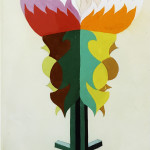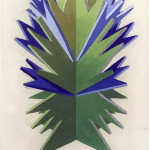Biography
Giacomo Balla was one of the founding members of the Futurist movement. Born in Turin, Balla studied at the Accademia Albertina di Belle Arti and the University of Turin. Following his studies, he moved to Rome in 1895, where he worked as a caricaturist, illustrator, and portrait painter. In 1899 his work was shown in the Venice Biennale and the Esposizione internazionale di belle arti at major art galleries at Rome, where he would regularly exhibit in successive years. Balla’s early work was informed by Pointilism and Italian Divisionism—artistic factions that focused on the representation of light and movement.
Beginning in 1903, Balla began to instruct Italian artists Gino Severini andUmberto Boccioni in divisionist painting techniques; over the ensuing decade, Balla’s work would be included in major avant-garde international shows, such as the Internationale Kunstausstellung in Dusseldorf and the Salon d’Automne in Paris. In 1910, Balla signed the Futurist Manifesto, along with Severini, Boccioni, Luigi Russolo, and Carlo Carrà. The faction of artists listed the depiction of movement as their primary objective, which they saw as symbolic of the dynamic, forward thinking of the 20th century. Balla’s realization of movement as a sequence of repeated forms was manifested in works such as Dynamism of a Dog on a Leash (1912) and The Hand of the Violinist (1912).
This segmentation of light and movement increased as Balla’s works gradually shifted toward complete abstraction, and his artistic output expanded to include sculptural compositions and works in the applied arts. Balla would continue to exhibit in Europe and the United States extensively throughout his career; in 1935, he was made a member of the Accademia di San Luca in Rome.
He died in Rome in 1958, at the age of 86.

 Fiori Futurista No 5
Fiori Futurista No 5
 Fiori Futurista No 6
Fiori Futurista No 6